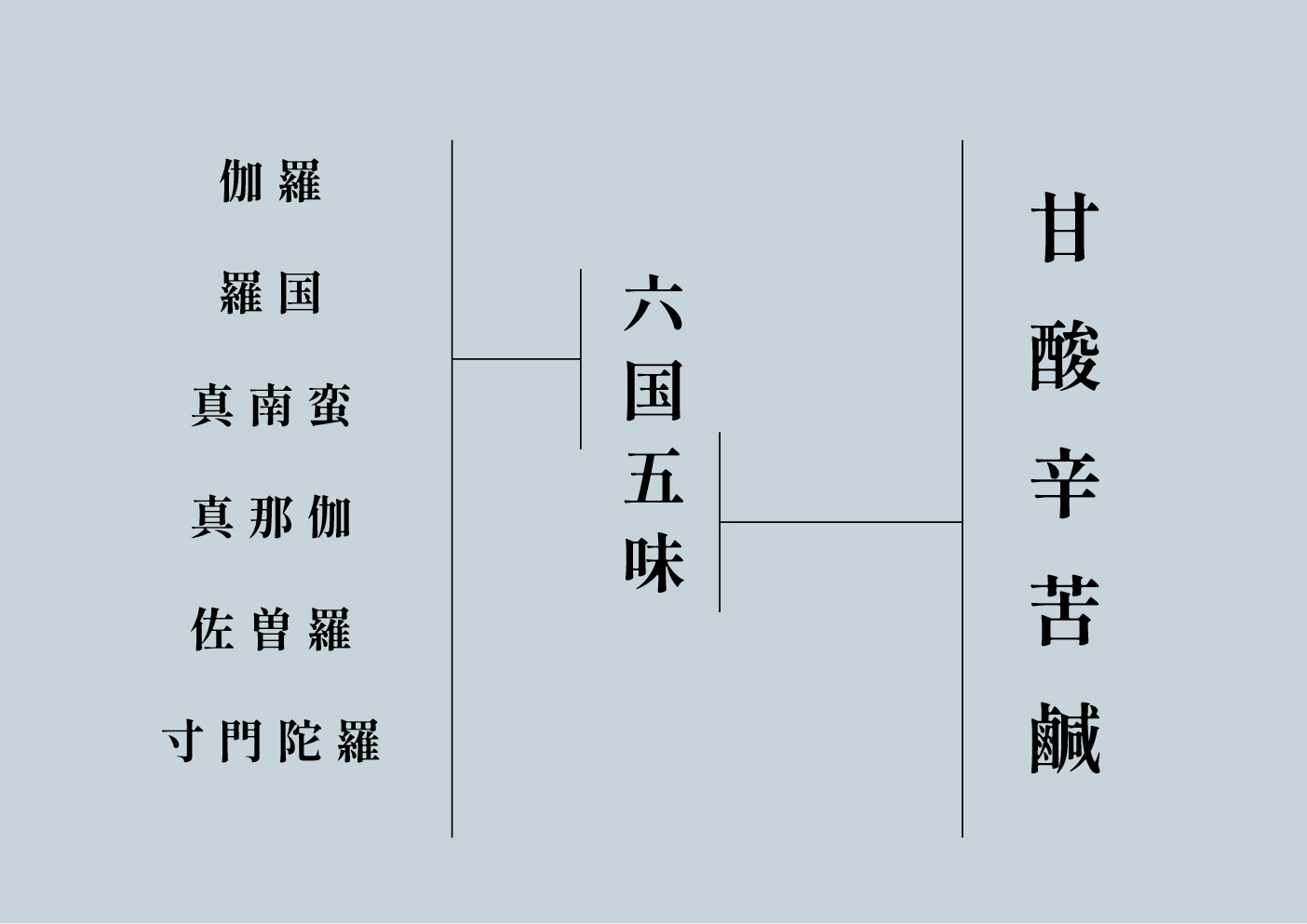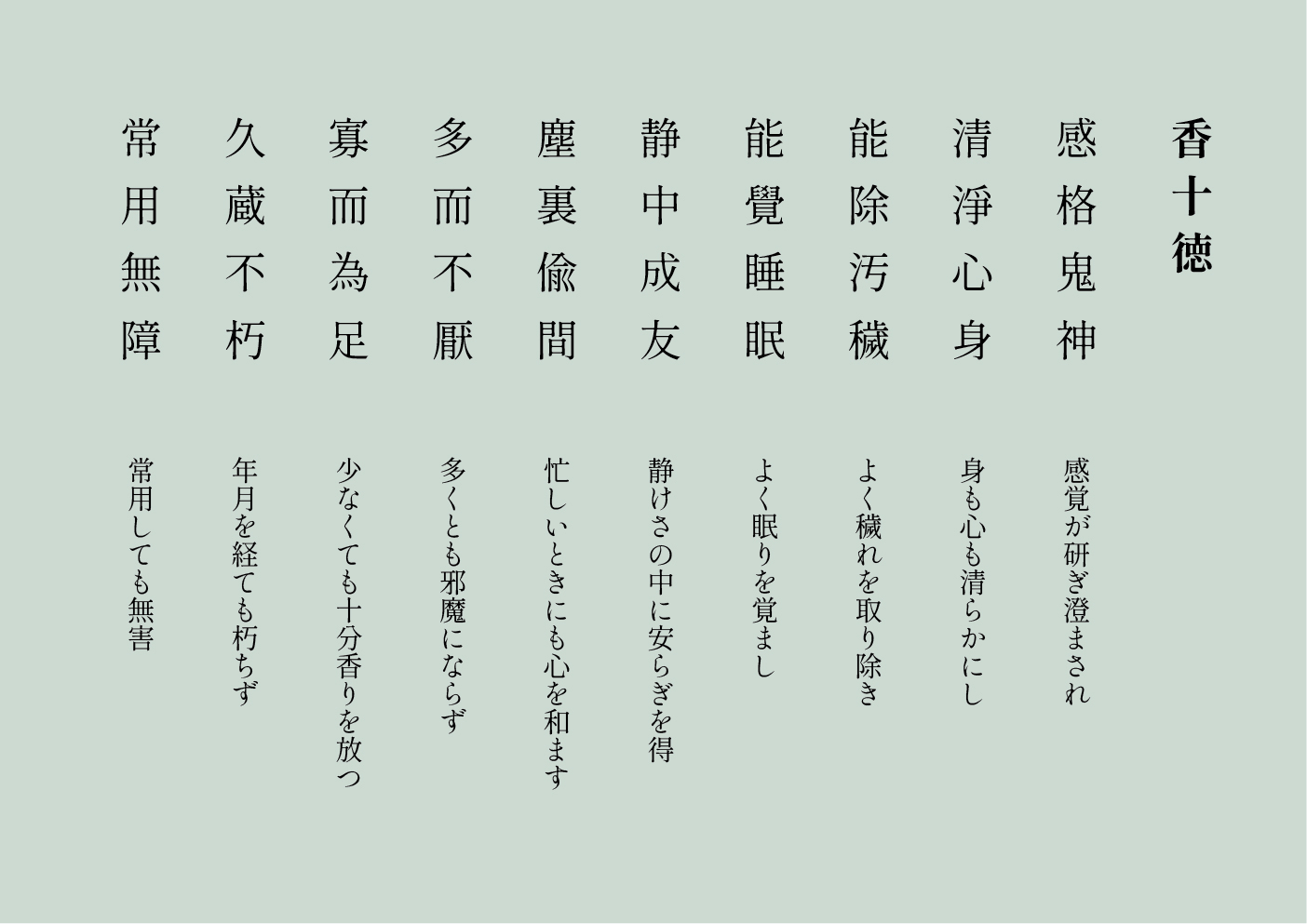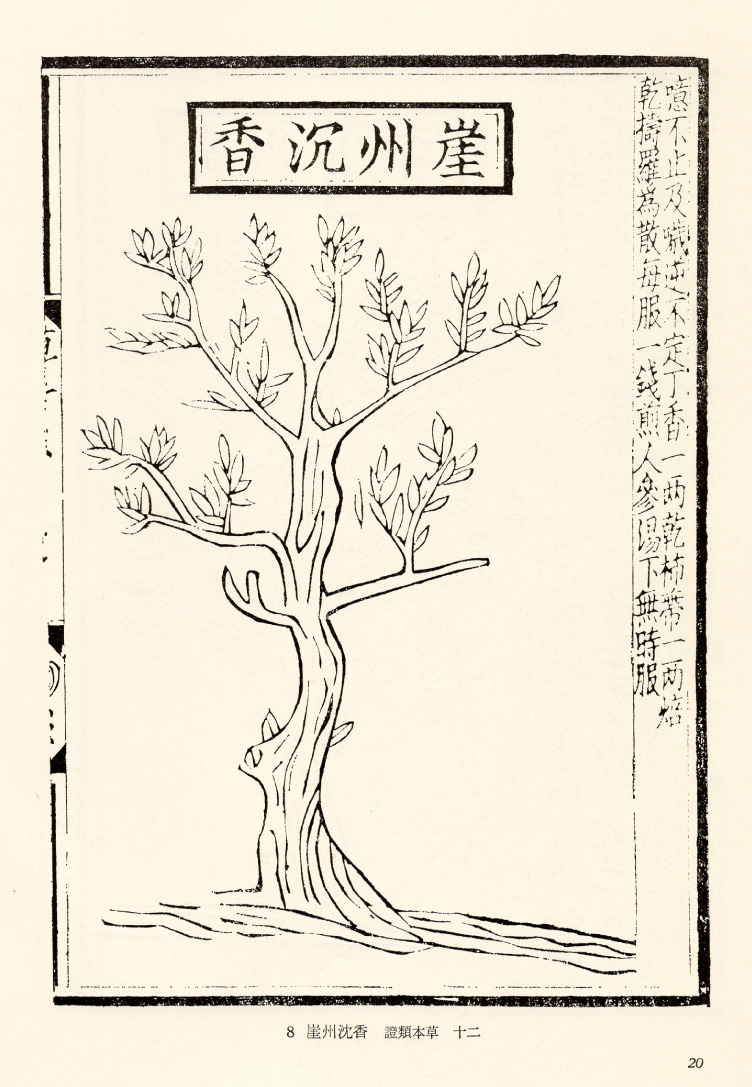プロジェクト名である√595は、日本に沈香が漂着したとされる「595年」に由来します。
沈香とは、香木(樹木より採れる香料)のひとつで、ジンチョウゲ科アキュラリア属の常緑高木に樹脂が沈着し、特有の香りを放つようになったものを指します。通常樹脂はもたない植物体ですが、傷などにより偶発的に樹脂が生成されるようですが、そのメカニズムはまだ解明されていません。
The name of our project, √595, derives from the year 595, when agarwood is said to have drifted to Japan.
Agarwood/Jinkoh is an aromatic wood (fragrance extracted from trees), in this case an evergreen tree belonging to the genus Acularia of the family Zingiberaceae. Normally, this plant does not produce resin, but it seems that resin is produced accidentally when the plant is injured, but the mechanism has not yet been elucidated.
香木は銘のあるものだけでも数百種に及び、香道の世界では、産地で伽羅・羅国・真南蛮・真那伽・佐曽羅・寸門陀羅の六国、さらにその香りを甘・酸・辛・苦・鹹 (かん) の五味とし、六国と五味を組合せて分類します。
There are hundreds of types of fragrant woods if we go by name alone. In the world of aromatic woods, fragrant woods are classified according to their place of origin: Kyara, Rakoku, Manaban, Manaka, Sasora, Sumotara. The aromas are further classified into five tastes: sweet, sour, spicy, bitter, and salty, and the six countries and five types of tastes are combined to classify them.


沈香を手がかりに歴史を辿ってみると、香料の質やその効能について語られているものは多く存在しますが、その香りについての記述は曖昧なものが多いように思います。それは、視覚的に捉えることのできない香りを、共通言語で語ることが難しいことが原因のひとつかもしれません。今回の制作にあたり、「香」にひとつの解釈を加えました。それは香りに視覚的な色や明るさ、柔らかさや滑らかさといった触覚的な質感を加え、香りのかたちを捉えることです。
Jinkohは、香木特有の深い重厚感をベースに、それとは真逆の繊細なヴェールが揺蕩うような浮遊感が共存する、神秘的で奥深い「沈香」の香りを表現しました。目に見えない香りを体感に置き換え、それを細分化したものを再構成する過程を経て、理想とする「沈香」の香りをお香で再現しています。
When we trace the history of agarwood, we find that there are many references to the quality of the fragrance and its efficacy, but many of the descriptions of the fragrance seem to be ambiguous. This may be partly due to the fact that it is difficult to use a common language to describe fragrances, which cannot be captured visually.
We have added one interpretation to the word "fragrance” for this project. It is to capture the form of fragrance by adding visual color, brightness, and tactile textures such as softness and smoothness to the fragrance. Jinkoh expresses the mysterious and profound "agarwood" fragrance, which is based on the deep and heartfelt sense of gravity peculiar to aromatic wood, co-existing with a floating sensation like a delicate veil shimmering in the air, which is the exact opposite of the feel of gravity. Through the process of replacing the invisible fragrance with a sense of experience and reconstructing the subdivisions of it, we have reproduced the ideal "Jinkoh" fragrance in this incense.
香りがもたらしてくれる効果・効能について、960年ー1127年の中国王朝「北宋」の詩人・黄庭堅(こうていけん)が説いた「香十徳」という漢詩があります。日本では、説話やアニメでも有名な一休禅師によって紹介され、ここに表現された香の効能は、現代のわたしたちの感覚にも通じています。
The effects and benefits of fragrance are described in a Chinese poem titled "The Ten Virtues of Fragrance" written by Huang Tingjian, a poet in the Northern Song Dynasty of China, which stretched from 960 to 1127.
In Japan, it was introduced by Zen monk Ikkyu, later famous for his stories and cartoons, and the benefits of incense described in this poem are also relevant to our modern sensibilities.

【材料】
Agarwood, Ambrette, Black pepper
商品サイズ:W24mm × H120mm × D24mm
内容量:40本
燃焼時間:約15分
長さ: 11cm
¥4,950(税込)
【材料】
Agarwood, Ambrette, Black pepper
【Post Card】(5枚入り)
【Paper Incense】( 5ピース入り /燃焼時間5分)
¥2,420(税込)